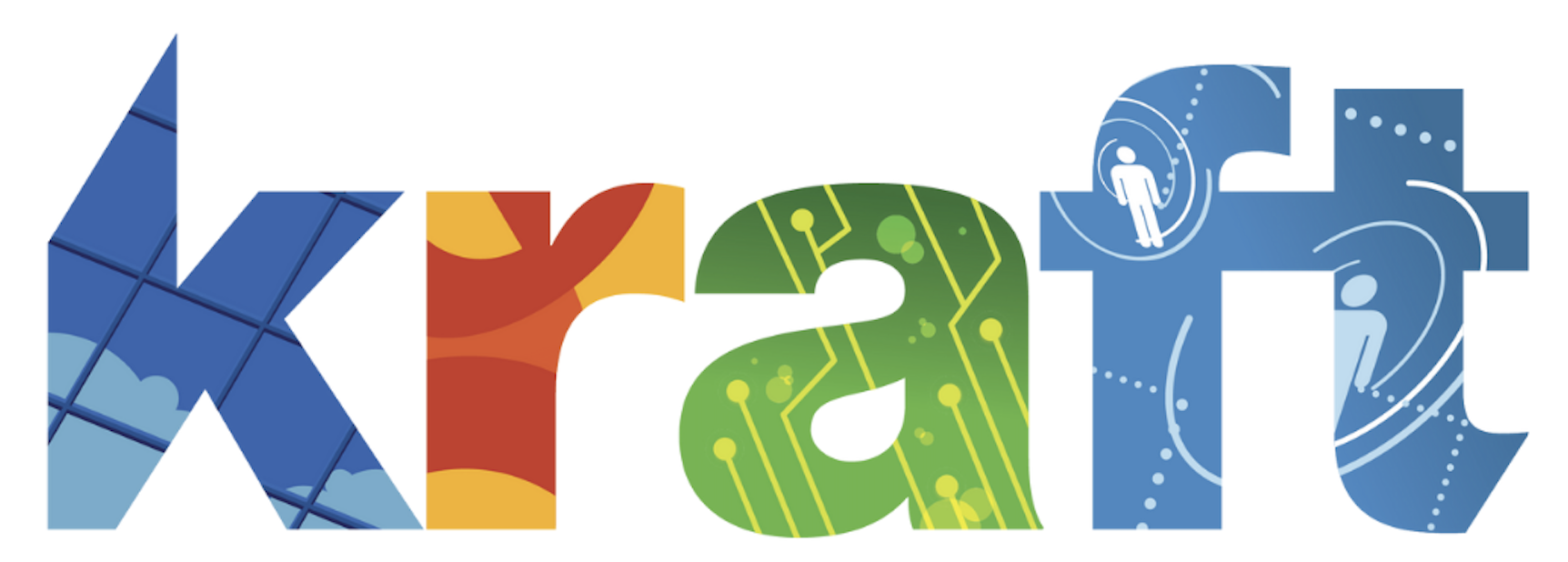The 21st century has been marked with changes to the way we communicate with each other and go about our day-to-day lives. Of course, this is due to the continuing advancement of technology. However, this evolution is not isolated to our lives away from work, it’s just as prevalent in the office.
Advancements in technology are happening faster than ever, and businesses that aren’t keeping up risk falling behind.
Therefore, it is essential for business owners to keep up with emerging trends year after year. Let us explore the top 10 technology trends for 2024 and the impact they may have on your businesses. Along the way, we’ll explain how these technologies work, the reasons behind their emergence, and how your businesses can benefit.
1. Generative AI and Machine Learning
Generative AI and machine learning are technologies designed to enable computers to learn and make decisions. Generative AI, in particular, can be used to create text, images, or videos, based on patterns identified in existing data.
Why is it an emerging trend for 2024?
Generative AI and machine learning are emerging trends for 2024 due to advancements in algorithms and computational power. These technologies have the potential to automate routine tasks, increase efficiency, and provide valuable predictive insights for businesses.
However, these technologies are incapable of truly original “thought,” so generated content may infringe on copyright or intellectual property (IP) rights. Therefore, the ethical use of generative AI and machine learning needs careful consideration.
How can businesses benefit?
Businesses can use generative AI and machine learning to automate processes and optimize operations. These technologies can also help improve decision-making, create customer experiences, and drive innovation.
2. Phygital Convergence
The “phygital convergence” combines physical and digital experiences, blurring the lines between online and offline channels. It involves the use of digital technologies to enhance real-world experiences and vice versa.
Why is it an emerging trend for 2024?
Phygital convergence will allows businesses to create seamless and immersive customer experiences. With the increasing reliance on digital channels, businesses that successfully integrate physical and digital touchpoints can gain a competitive edge.
The cost of phygital convergence technologies can be significant, especially for smaller businesses. Additionally, there is a learning curve involved for users who don’t know how to use the technology.
How can businesses benefit?
Businesses can benefit from phygital convergence by creating personalized, memorable experiences for customers. Through technologies like augmented reality (AR) and sensor-based interactions, businesses can engage customers in both physical and digital spaces.
3. Sustainable Technology
Sustainable technology are tools used to reduce waste and environmental impact. Several solutions, including renewable energy, energy-efficient systems, and eco-friendly materials, fall into this category.
Why is it an emerging trend for 2024?
Sustainability is a growing concern for businesses and consumers alike. In 2024, sustainable technology is expected to gain even more traction as businesses strive to meet environmental goals, comply with regulations, and align with the values of eco-conscious consumers.

Sustainable technology will be a central focus for organizations in 2024.
How can businesses benefit?
While the initial cost of implementation may be significant, sustainable technologies lead to saving in the long run because they help reduce energy consumption.
Businesses that adopt sustainable technology solutions can lower costs, improve operational efficiency, and enhance their brand reputation. By reducing energy consumption, optimizing resource usage, and minimizing waste, businesses can contribute to a more sustainable future while reaping financial benefits.
4. Quantum Computing
Quantum computing uses the principles of quantum mechanics to perform complex calculations at a much faster rate than traditional computers. Potentially, it will help solve traditionally time-consuming problems.
Why is it an emerging trend for 2024?
Quantum hardware and algorithms are expected to continue their advancements in 2024. As more companies invest in research and development, this technology will become more accessible in the future.
How can businesses benefit?
Quantum computing has the potential to revolutionize industries including logistics optimization and financial modeling. Businesses harnessing the power of quantum computing can gain a competitive edge by solving complex problems faster and making more accurate predictions, which will improve efficiency.
5. Continuous Threat Exposure Management (CTEM)
Continuous Threat Exposure Management (CTEM) is a cybersecurity approach focused on monitoring, detecting, and responding to threats. It involves proactive threat hunting, real-time detection, and active defense measures.
Why is it an emerging trend for 2024?
The rising frequency and sophistication of cyber threats has made CTEM essential. In 2024, businesses will increasingly adopt this approach as traditional cybersecurity measures become obsolete.
How can businesses benefit?
By implementing CTEM, businesses significantly reduce the risk of cyber threats. Continuous monitoring and real-time threat detection allow for timely response and remediation, minimizing the impact of breaches. This helps protect sensitive data, maintain customer trust, and safeguard the overall integrity of businesses.
CTEM can enhance an organization’s ability to detect and respond to cyber threats, but it requires ongoing investments in technology and expertise.
Transforming Data into Insights: The Power of Datafication
Datafication refers to converting information into digital data. It enables the analysis, storage, and interpretation of vast amounts of data, providing valuable insights and driving decision-making.
Why is it an emerging trend for 2024?
Due to the increasing availability and utility of data and data analysis, datafication will be among the most prevalent technology trends in 2024.
The ability to capture and process data at scale has become crucial for businesses. Especially for those in the healthcare, finance, marketing, and logistics fields.
How can businesses benefit?
Businesses can leverage datafication to gain valuable insights into customer behavior, market trends, and operational efficiency. By analyzing data, businesses can make informed decisions, personalize customer experiences, optimize processes, and identify new revenue streams.
7. Digital Trust
Digital trust refers to the reliability of a digital interaction or transaction. This includes aspects of cybersecurity, data privacy, transparency, and the ethical use of technology.
Why is it an emerging trend for 2024?
For businesses relying on digital channels, establishing and maintaining digital trust is paramount. In 2024, the growing concern around data privacy, cybersecurity breaches, and unethical use of technology will drive the focus on building and preserving digital trust.
How can businesses benefit?
Businesses prioritizing digital trust can build strong customer relationships, enhance brand reputation, and differentiate themselves from competitors. All this together means more businesses use robust security measures as a means of protecting customer data.
8. 3D Printing
3D printing—or additive manufacturing—creates three-dimensional objects by depositing material layer by layer based on a digital model or design. This technique produces complex, custom projects with precision and efficiency.

3D printing is becoming increasingly accessible, so it is expected to continue its emergence in 2024.
Why is it an emerging trend for 2024?
3D printing was once thought of as an expensive endeavor. Not only were the printers and materials costly, but programming the printers was difficult.
Advancements in 3D printing technology, though, have positioned it as an emerging trend for 2024. The ability to create customized products quickly and at scale offers significant opportunities for businesses across various industries.
How can businesses benefit?
3D printing is perfectly suited for rapid prototyping, reducing development time and costs. It also has the potential to revolutionize supply chains through on-demand production and localized manufacturing.
By adopting 3D printing, businesses can reduce production time, optimize supply chains, and create unique, customized products. This technology empowers businesses to meet individual customer needs, reduce waste, and achieve cost savings in manufacturing processes.
9. Edge Computing
Edge computing processes data closer to the source, reducing latency and bandwidth usage. It enables real-time data analysis and decision-making at the edge of a network, without the need to rely heavily on cloud infrastructure.
Why is it an emerging trend for 2024?
Emerging technologies like the Internet of Things (IoT) and 5G networks generate massive amounts of data. This data relies on quick processing and response times. Edge computing enables faster data analysis, reduced network congestion, and improved security.
How can businesses benefit?
By leveraging edge computing, businesses can reduce latency, improve application performance, and enhance data security. The ability to process and analyze data closer to the source enables real-time decision-making, enhances user experiences, and supports critical business operations in sectors such as healthcare, manufacturing, and transportation.
10. Virtual Reality (VR) and Augmented Reality (AR)
Virtual Reality (VR) is a technology that creates a simulated environment, immersing users in a completely artificial world. Augmented Reality (AR) overlays digital content onto the real world, enhancing real-life experiences.
Why are they emerging trends for 2024?
VR’s and AR’s emergence were accelerated by the COVID-19 pandemic. The need for remote collaboration and the desire for immersive experiences sparked the advancement in the technologies and increased their accessibility. These technologies offer new ways for businesses to engage with customers, train employees, and enhance collaboration.
How can businesses benefit?
Businesses benefit from VR by creating virtual stores or showrooms, allowing customers to experience products in a simulated environment and increasing sales conversions. They can AR to overlay digital information onto physical products, enhancing customer engagement and improving product usage and understanding.
Moreover, VR and AR can be used for employee training, providing realistic simulations and immersive experiences to enhance learning and improve job performance. They can also be used for virtual meetings and collaboration, reducing travel costs and enabling remote teams to work together effectively.
By adopting VR and AR technologies, businesses can enhance customer experiences, improve training and collaboration, and gain a competitive advantage in their respective industries.
Stay Ahead of the Curve with Kraft
Technology is transforming the way businesses operate, creating unprecedented opportunities for growth and innovation. By staying informed about technology trends, businesses can evaluate their potential impact and proactively adapt, gaining a competitive edge.
If you’re a business owner looking to stay ahead of the curve, consider partnering with Kraft Business Systems. Kraft will help your business take advantage of the latest technologies to improve your productivity, efficiency, and profitability. Contact us today to learn more about how we can help your business thrive in the fast-changing digital landscape.






